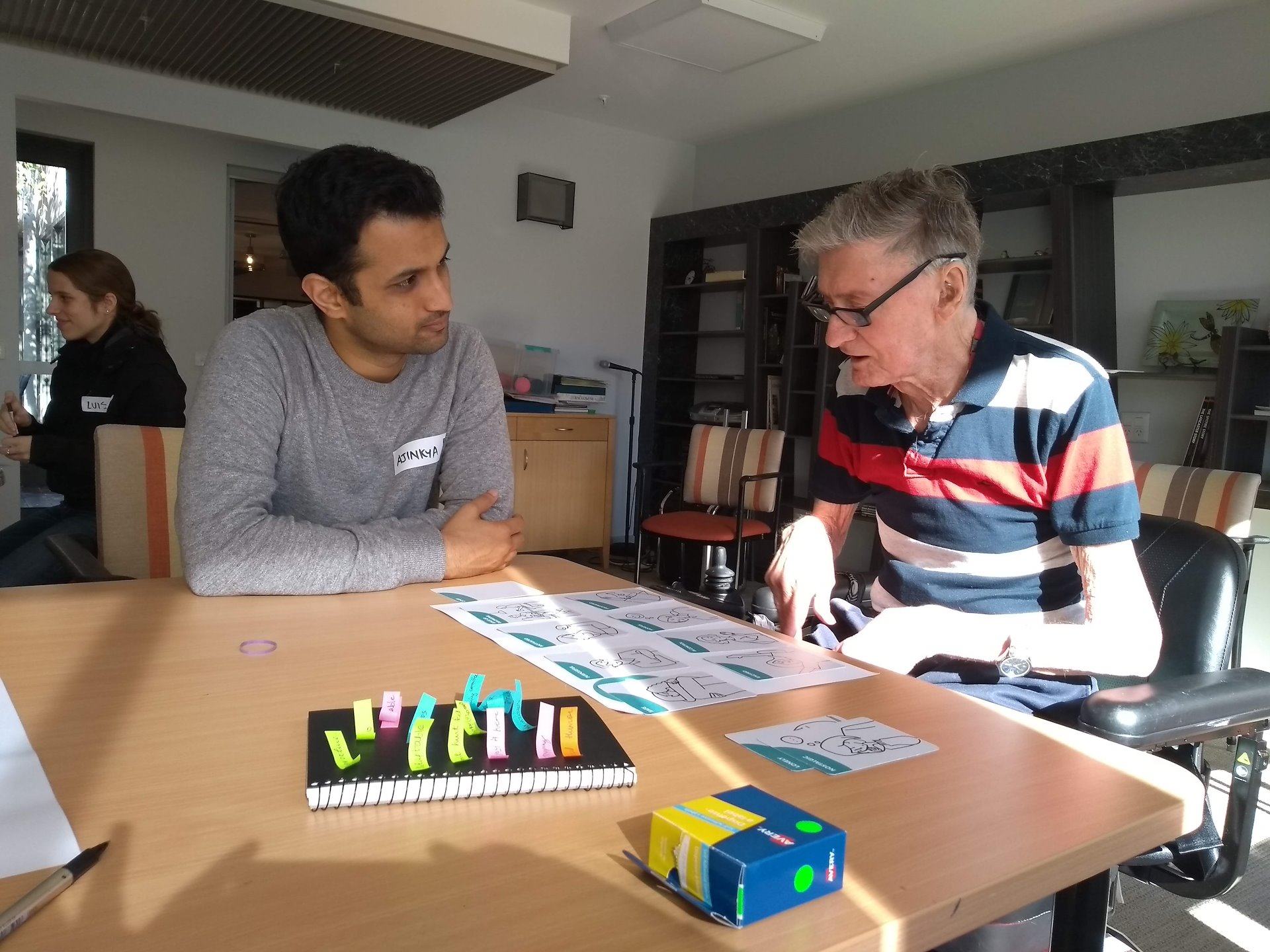

Co-design Toolkit – Uniting Age Well
My Role
User Research
Workshop Facilitation
Human Centred Design
Client Engagement
How might we design a co-design toolkit for Uniting Age Well, to facilitate a better understanding of their users and enable them to co-design service offerings with them?
Project
Goals
- 1. To enable Uniting Age Well to co-design service offerings with their users, family & friends, as well as the front line staff
- 2. To devise a fit for purpose approach to undertaking co-design of individual care services using human centred design (HCD) methodologies
Uniting Age Well (UAW) is an organisation that provides residential and community services for older Australians in Victoria and Tasmania. A problem that many organisations in the aged care space currently face is the applicability of HCD toolkits to people that may experience different levels of communication or cognitive capacity. Uniting Age Well wanted a communication toolkit that is inclusive of their customers and enabled participation from a broad range of people catering to the language and cultural diversities.
The toolkit needed to be easy to learn and apply by a wide range of workers. It needed to account for diverse backgrounds, especially workers who have English as a second language. It needed to be accessible to informal carers for example adult children/spouses/siblings/friends of customers.
Skills
Used
- Design Workshop | User Interviews | Co-design | Empathy Maps
- Participatory Design | Contextual Research | Card Sorting
We visited one of the UAW facilities to conduct workshops and get a better understanding of the users (residents). We designed 3 activities that aimed at unpacking data about them as individuals, their perception of the service they receive, their aspirations and their motivators and blocks. We also created Empathy Maps for each of the individuals we spoke to immerse ourselves in their world. The key learning from this workshop was that UAW is failing to recognise them as individuals and catering their unique personalities. There was a need to enable UAW to understand their users more deeply, so that they can provide more sophisticated and catered service to each individual, on top of the excellent medical and general care they provided for.


Empathy Map
The final toolkit we developed focussed on uncovering deep and rich insights about the personalities of each resident and enable the carers to identify all of them as individuals with a unique identity. We focussed on 3 aspects of their personality – Do, Be & Feel. Each category had 10 cards that the residents could choose from that best represent who they are or want to be. This could give the care giver staff a window into who they are as individuals and foster a deeper & stronger relationship, thereby enabling UAW to provide better services to the residents.
Do:presents the people with options that describe the activities they like to do like 'shopping' or 'reading' which can prompt the user to talk more in detail about their favourite activities.
Be: presents the people with options that describe their personality and character traits like 'extrovert' or 'sensitive' and users can select the ones they most identify with.
Feel: presents the people with options that describe their feelings and state of mind like 'excited' or 'nostalgic' which can help the user better describe how they feel in this phase of their life.


Project
Impact
- 1. The toolkit helped the carers have a structured conversation with the residents and get to know them as individuals
- 2. The residents felt like for the first time they weren't all just looked at in the same light as 'old people' and felt identified
- 3. The toolkit was easy to implement due to its visual nature and accounted for the evolving personalities of residents
Learnings
User segmentation is needed: Uniting Age Well at an operational level, treated all the residents (users) in more or less the same way; with the only differentiation coming in the way of cognitive and physical abilities of the residents. Service providers need to ensure research driven, sophisticated & comprehensive user segmentation to ensure no users feel alienated.
The power of change of perspective: Some residents have let the outer world convince them that a subpar life is what old age is all about. But there are some who still hold aspirations and ambitions, and it is our responsibility as designers to empower the age care system to support that.